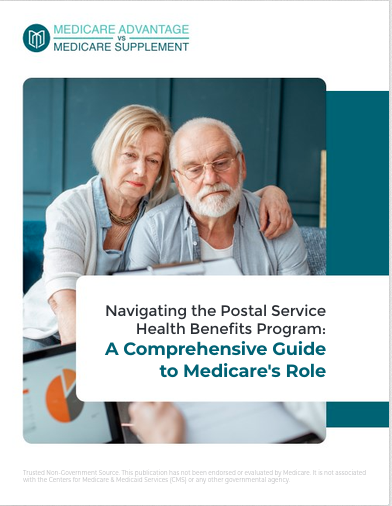Key Takeaways:
- Understanding the different parts of Medicare is crucial for choosing the right coverage.
- Each part of Medicare covers specific healthcare needs, helping you manage costs and access necessary services.
What Are the Differences in Medicare Parts A, B, C, and D? Find Out Here
Medicare is the federal health insurance program for people aged 65 and older, and for some younger individuals with disabilities. It consists of four parts, each covering different types of healthcare services. Here, we break down the differences in Medicare Parts A, B, C, and D to help you understand what each part covers and how they can benefit you.
Overview of Medicare: Parts A, B, C, and D Explained
Medicare is divided into four main parts:
- Medicare Part A (Hospital Insurance): Covers inpatient hospital stays, care in a skilled nursing facility, hospice care, and some home health care.
- Medicare Part B (Medical Insurance): Covers outpatient care, doctor’s services, preventive services, and medical supplies.
- Medicare Part C (Medicare Advantage): Offered by private companies, combines Parts A, B, and usually D, and may offer additional benefits.
- Medicare Part D (Prescription Drug Coverage): Helps cover the cost of prescription drugs.
Understanding these parts will help you choose the right coverage for your healthcare needs.
Medicare Part A: Hospital Insurance Coverage
Medicare Part A, also known as hospital insurance, primarily covers inpatient care in hospitals, including critical access hospitals and skilled nursing facilities. It also covers hospice care and some home health care services. Here are the main benefits of Part A:
- Inpatient Hospital Care: Covers semi-private rooms, meals, general nursing, and drugs as part of your inpatient treatment.
- Skilled Nursing Facility Care: Covers rehabilitation and nursing care in a skilled nursing facility after a qualifying hospital stay.
- Hospice Care: For terminally ill patients, covers services to provide pain relief and support.
- Home Health Care: Limited to part-time or intermittent skilled nursing care and therapy.
Most people do not pay a premium for Part A if they have worked and paid Medicare taxes for at least 10 years.
Medicare Part B: Medical Insurance Services
Medicare Part B covers a wide range of outpatient services and preventive care. It includes doctor visits, lab tests, surgeries, and many preventive services like screenings and vaccines. Here’s what Part B covers:
- Doctor’s Services: Visits to primary care physicians and specialists.
- Outpatient Care: Services that do not require an overnight hospital stay, such as X-rays and emergency room visits.
- Preventive Services: Screenings, vaccines, and annual wellness visits.
- Durable Medical Equipment (DME): Items like wheelchairs, walkers, and hospital beds.
- Home Health Services: Part-time or intermittent skilled nursing care and therapy.
The standard monthly premium for Part B in 2024 is $174.70, with higher premiums for individuals with higher incomes.
Medicare Part C: Medicare Advantage Plans
Medicare Advantage Plans, also known as Part C, are an alternative to Original Medicare. These plans are offered by private insurance companies approved by Medicare and must cover all services provided under Parts A and B. Medicare Advantage Plans often include additional benefits not covered by Original Medicare, such as vision, hearing, dental services, and wellness programs.
Key features of Medicare Part C:
- Comprehensive Coverage: Combines Parts A, B, and usually D.
- Additional Benefits: May include vision, hearing, dental care, and fitness programs.
- Provider Networks: Requires using doctors and hospitals in the plan’s network.
- Cost Structure: Often has lower out-of-pocket costs than Original Medicare but varies by plan.
Medicare Advantage Plans may also offer prescription drug coverage, integrating all Medicare benefits into a single plan.
Medicare Part D: Prescription Drug Coverage
Medicare Part D helps cover the cost of prescription drugs. It is provided through private insurance companies that follow rules set by Medicare. Part D plans cover a wide range of medications, including both generic and brand-name drugs.
Key aspects of Part D:
- Formulary: A list of covered drugs, which can vary by plan.
- Coverage Phases: Includes deductible, initial coverage, coverage gap (donut hole), and catastrophic coverage phases.
- Costs: Monthly premiums, deductibles, and copayments vary by plan.
It’s important to review the formulary of each Part D plan to ensure it covers the medications you need.
Comparing Benefits Across Medicare Parts A, B, C, and D
Each part of Medicare provides different types of coverage:
- Part A: Inpatient hospital care, skilled nursing facility care, hospice, and home health care.
- Part B: Outpatient care, doctor’s services, preventive services, and DME.
- Part C: Combines A, B, and usually D, with additional benefits like dental and vision.
- Part D: Prescription drug coverage.
Choosing the right combination of Medicare parts depends on your healthcare needs and budget.
Eligibility and Enrollment for Medicare Parts A, B, C, and D
Eligibility for Medicare is generally based on age (65 and older), disability, or specific conditions like ESRD. Enrollment periods are crucial:
- Initial Enrollment Period (IEP): Starts three months before your 65th birthday and ends three months after.
- General Enrollment Period (GEP): January 1 to March 31 each year for those who missed IEP.
- Special Enrollment Period (SEP): For individuals with specific circumstances, such as losing employer coverage.
Timely enrollment helps avoid late penalties and coverage gaps.
Costs and Premiums for Medicare Parts A, B, C, and D
Understanding the costs associated with each part of Medicare is essential:
- Part A: Usually premium-free if you paid Medicare taxes for 10 years. Premiums apply if not.
- Part B: Standard premium is $174.70 in 2024, with higher premiums for higher incomes.
- Part C: Varies by plan, may have additional premiums.
- Part D: Monthly premiums, deductibles, and copayments vary by plan.
Costs can add up, so it’s important to choose a plan that fits your budget.
Additional Benefits and Coverage Options
Medicare Advantage (Part C) often includes additional benefits not covered by Original Medicare, such as:
- Vision Care: Routine eye exams and eyewear.
- Dental Care: Cleanings, exams, and dental procedures.
- Hearing: Hearing exams and hearing aids.
- Wellness Programs: Fitness memberships and wellness resources.
These additional benefits can provide significant value depending on your health needs.
Choosing the Right Medicare Plan for Your Needs
Selecting the right Medicare plan involves considering your healthcare needs, budget, and preferred providers. Compare the coverage and costs of Original Medicare versus Medicare Advantage. Utilize resources like the Medicare Plan Finder to review available plans in your area. Consult with a licensed insurance agent or Medicare counselor if you need assistance.
Contact Information:
Email: [email protected]
Phone: 9075554567










